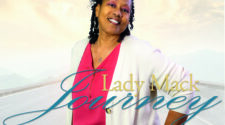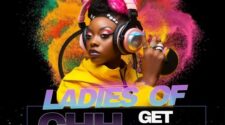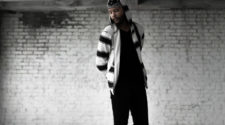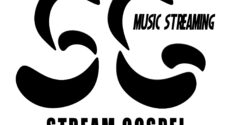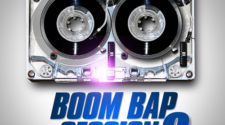“How many faking they streams? (A lot)/ Getting they plays from machines? (A lot)”
While we are on a high of A3C, Aaron Cole winning New Artist at the Dove Awards, and Lecrae and GAWVI winning awards as well, it’s time for a reality check.
What would you do if I told you that the playlist you just paid X amount of dollars to be on was mostly made up of fake followers? What if your hard-earned cash that was supposed to put you in the earbuds of 50,000 followers was mostly just a bunch of bot followers? Would you be mad? Would you want your money back? How would you feel?
Now, what if we told you that this is happening rampantly in music and if you paid for placement, it probably happened to you too?
The new almighty scale and metric of artist success these days are no longer dependent on record sales. The key metric to success and sustainability is song streams. How many followers do you have a month? How many streams do you have a month?
It’s simple really: the more streams and followers you get, the more inflated your numbers are, the more monetary compensation, and bargaining power you have. Large playlists on Spotify are a gold rush of exposure. “If I could just get on [PLAYLIST], I’d be exposed to one million people!” Theoretically yes. However, the truth is much harder to swallow.
Most of these huge independent playlists you’re chasing and dishing a TON of money out to are entirely made up of fake accounts to make them seem huge. Artists are unknowingly bending over backward to make these playlists to increase their numbers.
“Okay, but I’m getting plays, making money off Spotify streams, so what’s the big deal?” The big deal is that you are selling yourself short. That’s why you can have a million streams a month and have 30 people show up to your concert. That’s why you don’t sell any merch or even have a decent social media following to match. You are being gamed by a system that’s rigged to take your money for fake success.
Rapzilla.com owner Chad Horton shed some insight into this issue, which he’s been researching with Rapzilla Creative Director Steven Solis for weeks.
“I helped build Syntax Creative, a digital distribution company that is still alive and thriving. I was there for 8 years and am currently utilizing Rapzilla to distribute and market music, so I am extremely knowledgeable on all things digital distribution and playlisting.
Our team has been testing and researching third party playlisting and playlists that charge artists to get placed. What we found on Spotify is that there are many playlists appearing in artists’ top-five ‘Discovered On’, and while they appear to be extremely effective, what is actually behind the veil is a façade. The playlist followers are fake which also means the streams are fake.
The clout chasing culture is causing these artists to be taken advantage of. They are thinking they’re being put on for little work or money when in reality they are getting nothing in return. It’s hurting our scene and the music industry as a whole. One of the reasons it hurts everyone is it makes the valuable analytics that Spotify provides such as top cities for your listener base null and void considering those top cities are skewed by the fake and streams from fake accounts. If you are paying to be on these playlists then you’re not able to utilize the top markets Spotify provides for you to make decisions like where you should tour. It also means that you’re taking money from Spotify which should go to an artist that is receiving real organic streams.
More negative factors would be brands, and promoters partnering with artists based on their Spotify numbers assuming that is the real audience. What will be discovered in the end is the artist doesn’t have nearly the impact assumed from the numbers seen on Spotify. This will cause artists to burn bridges with valuable partners in the music business because they can’t deliver on what their numbers show.”
So how do we know that a playlist has fake followers and fake streams? In the next few paragraphs, we share the results of the research we have been doing to come to that conclusion.

A red flag and indicator that a playlist is fake are that there are about the same amount of streams and listeners on your song from a particular playlist (pictured above). On an organic playlist, you will have more streams than listeners on your song. People tend to stream a song more than once. To have the same amount exactly or almost exactly is almost impossible.
Another sign is that every follower of a playlist listens to your song in one day. That will not happen. What are the odds that a playlist with even 500 followers will have every single person listening to your song in a day, week, or month? This is highly unlikely.
Also, Spotify is reportedly cracking down on artists who are getting fake streams. These artists may get “blacklisted” from being placed in search results, homepage, and organic playlists.

There is an extremely helpful tool in Chartmetric.com. In this site you can see all sorts of analytics such as the growth of playlist followers, what songs are on a playlist, what songs were on that playlist, the date songs were added and removed, and more. You can see if the growth of followers on a playlist looks suspect or not (refer to picture above). If a playlist grows followers from 0 to 54,000 overnight, be assured that it’s fake.

The picture above shows a song that has a Spotify editorial playlist (The Flow) and a third-party playlist that has 13,000 more followers but double the listeners for this song. The third-party playlist also has fewer songs which makes the streams seem legit as well. But remember, you can check the follower growth in the Chartmetric tool. How would a playlist that isn’t owned by a company and backed marketing efforts, have more followers than Spotify’s playlists that are featured on the platform? Fake followers, supported by fake streams?
We had a conversation with RMG artist Canon and he was also aware of our findings with playlists. Canon was passionate about doing things the right way and setting up our artists for success. He gave us the following statement.

photo by Barry Daly
“As I’ve come to understand the changes in how we may engage our audiences with public platforms, I’ve realized the deeper issue of fraudulent playlisting for streams comes down to two things; insecurity and a lack of affirmation towards newer emerging artists from those who have led within the musical community.
3,179 total views, 0 views today




